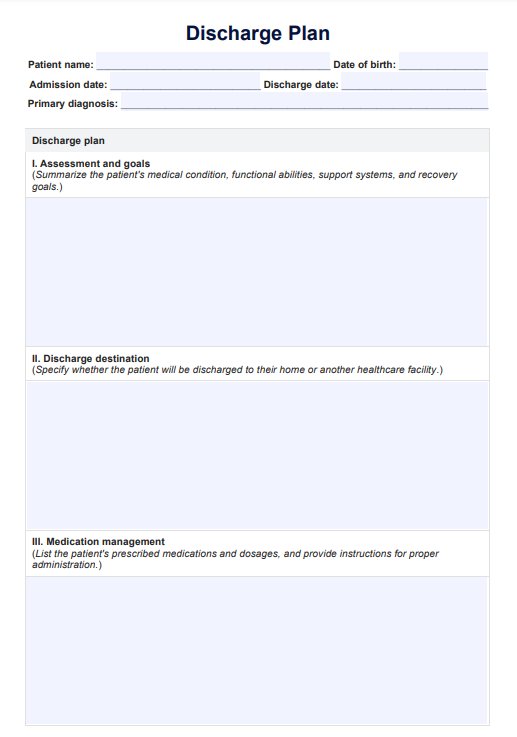Discharge plans are typically used by healthcare professionals, such as nurses, doctors, case managers, and social workers, to facilitate a patient's transition from the hospital to their home or another healthcare facility.

Discharge Plan Template
Discover a comprehensive Discharge Plan Template to guide your patient's transition from the hospital. Download a free PDF example to get started.
Discharge Plan Template Template
Commonly asked questions
A Discharge Plan Template is used when creating a comprehensive discharge plan for patients, particularly those with complex medical conditions or requiring additional care and support after leaving the hospital.
The frequency of updating a discharge plan form depends on the patient's medical condition, progress, and any changes in their care needs. Reviewing and updating the discharge plan is essential to ensuring appropriate care and support are provided during the patient's recovery.
EHR and practice management software
Get started for free
*No credit card required
Free
$0/usd
Unlimited clients
Telehealth
1GB of storage
Client portal text
Automated billing and online payments











